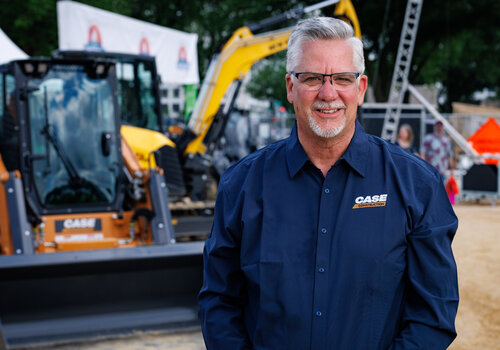Full-Depth Reclamation (FDR) is a sustainable and cost-effective method for rehabilitating worn-out asphalt pavements. As construction contractors face increasing demands for efficiency, environmental stewardship and budget management, understanding the advantages and limitations of FDR becomes crucial. Let’s explore the pros and cons of FDR to help contractors make informed decisions for their projects.
UNDERSTANDING FULL-DEPTH RECLAMATION
Full-Depth Reclamation (FDR) is a pavement rehabilitation process that involves recycling the existing asphalt and base materials to create a new stabilized base. This method pulverizes the existing pavement layers, mixes them with additives (such as cement, lime or asphalt emulsion), and then compacts the mixture to form a strong base for a new surface layer. FDR is suitable for diverse types of roads, from rural routes to urban streets and offers numerous benefits over traditional reconstruction methods.
PROS OF FULL-DEPTH RECLAMATION
- Cost-Effectiveness
One of the most significant advantages of FDR is its cost-effectiveness. By recycling existing materials, contractors can save on the costs associated with new materials, transportation and disposal. This reduction in material costs, combined with the decreased need for new aggregates and asphalt, makes FDR an economically attractive option. - Environmental Benefits
FDR is an environmentally friendly process. Recycling the existing pavement reduces the need for new raw materials, thus conserving natural resources. Additionally, the process minimizes waste generation and reduces the environmental impact associated with transporting and disposing of old pavement materials. The use of additives like cement and asphalt emulsion further enhances the sustainability of the process. - Time Efficiency
FDR can significantly reduce project timelines. Since the process involves recycling and stabilizing existing materials on-site, the need for extensive excavation, hauling and disposal is eliminated. This results in faster project completion, minimizing disruptions to traffic and local communities. - Improved Pavement Performance
FDR improves the structural integrity and performance of the rehabilitated pavement. The process creates a stronger, more uniform base by blending the existing materials with stabilizing agents. This enhanced base can better withstand traffic loads and environmental stresses, leading to longer-lasting pavements with reduced maintenance requirements. - Versatility
FDR is a versatile technique that can be adapted to various pavement conditions and project requirements. Contractors can adjust the type and amount of additives used to achieve the desired strength and durability. This flexibility makes FDR suitable for a wide range of projects, from highways to parking lots.
CONS OF FULL-DEPTH RECLAMATION
- Initial Equipment and Training Costs
Implementing FDR requires specialized equipment and trained personnel. Contractors may need to invest in reclaimers, stabilizers and other machinery, which can be costly. Additionally, training employees to operate the equipment and execute the process correctly adds to the initial expenses. - Limited Applicability in Certain Conditions
FDR may not be suitable for all pavement conditions. For example, pavements with severe drainage issues, extensive subgrade problems or significant contamination may not benefit from FDR. In such cases, traditional reconstruction methods might be more appropriate. - Quality Control Challenges
Achieving consistent quality in FDR projects can be challenging. Variations in the existing pavement materials, improper mixing of additives and inadequate compaction can affect the final product's performance. Contractors must implement rigorous quality control measures to ensure the success of FDR projects. - Weather Sensitivity
FDR operations are sensitive to weather conditions. Wet or freezing weather can hinder the mixing and compaction processes, leading to delays and potential quality issues. Contractors must carefully plan FDR projects to avoid adverse weather conditions and ensure optimal results. - Additive Costs
While FDR reduces the need for new aggregates and asphalt, the cost of additives such as cement, lime, or asphalt emulsion can be significant. The choice and quantity of additives depend on the specific project requirements, and their cost can impact the overall budget.
FINAL THOUGHTS
Full-Depth Reclamation (FDR) offers numerous advantages for construction contractors, including cost savings, environmental benefits, time efficiency, improved pavement performance, versatility and a reduced carbon footprint. However, it also presents challenges such as initial equipment and training costs, limited applicability in certain conditions, quality control issues, weather sensitivity, additive costs and the potential for inconsistent results.
Contractors considering FDR should carefully evaluate the specific conditions of their projects and weigh the pros and cons. By doing so, they can determine whether FDR is the right choice for their pavement rehabilitation needs. When implemented correctly, FDR can provide a sustainable, cost-effective and efficient solution for renewing aging infrastructure and supporting the growing demand for resilient and eco-friendly construction practices.
Top 5 Considerations for FDR
Implementing Full-Depth Reclamation (FDR) requires careful planning and evaluation. Here are the top five considerations to ensure a successful FDR project.
- Pavement Assessment: Evaluate the existing pavement's structural integrity, subgrade condition, and drainage issues to ensure suitability for FDR.
- Additive Selection: Choose the right stabilizing additives (cement, lime, asphalt emulsion) based on project needs to enhance strength and durability.
- Quality Control: Maintain consistent mixing, proper compaction, and uniformity of the reclaimed material through rigorous quality control measures.
- Weather Planning: Schedule FDR operations in favorable weather to avoid issues with mixing and compaction, ensuring optimal results.
- Cost Analysis: Balance the initial investment in equipment and training with long-term savings on materials and transportation for economic viability.
Photo credit: STAVRIDA/BIGSTOCKPHOTO.COM












